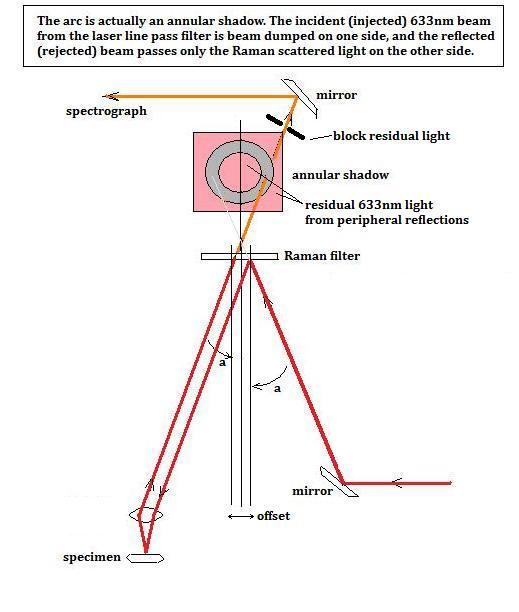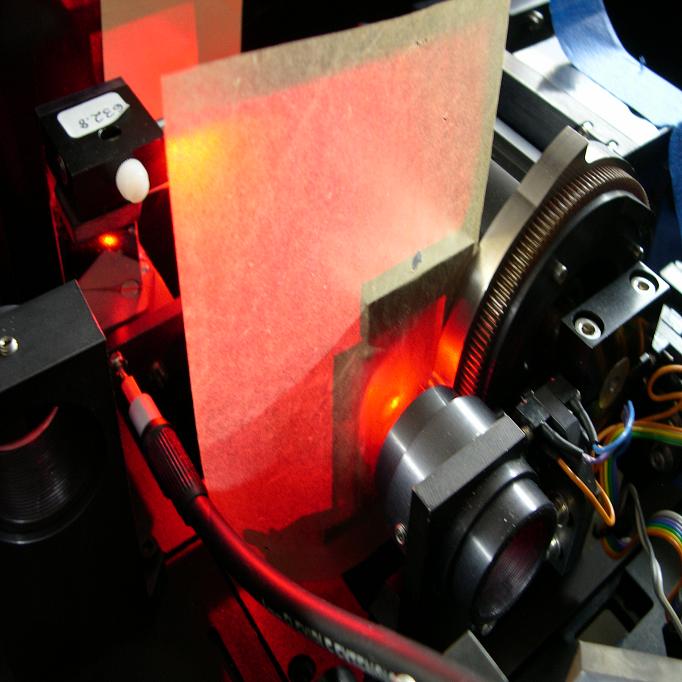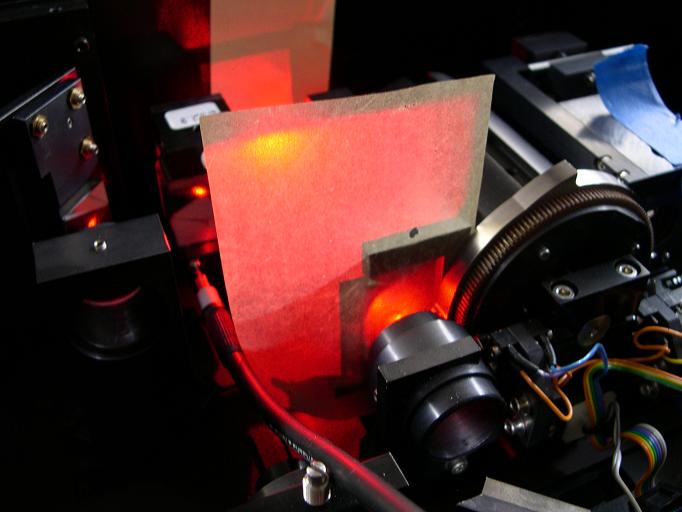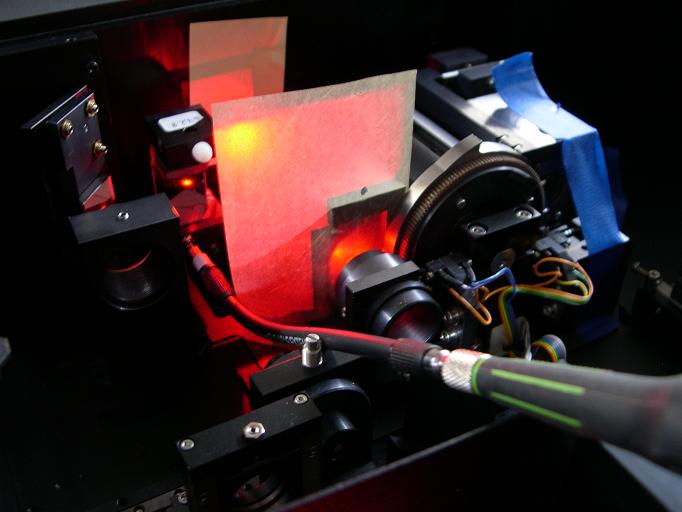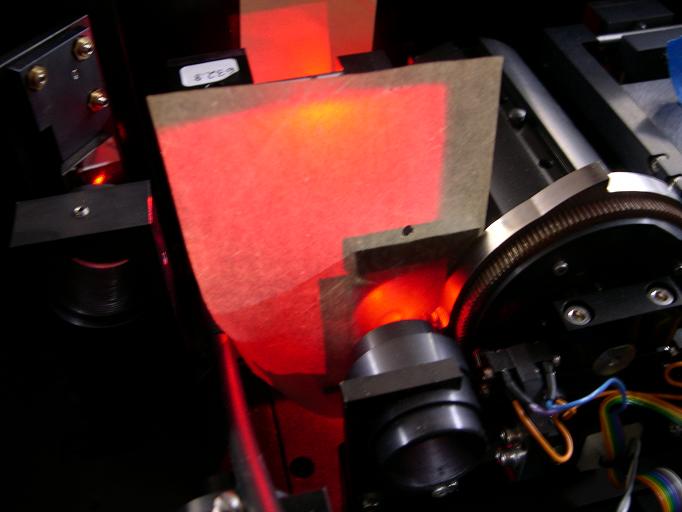Raman Notch Filter Alignment
Filter Turret
The Raman filter is an "injection/rejection" type notch filter.
It acts as a combined beam splitter and Rayleigh scattered light filter.
It is more difficult to adjust than the separate beamsplitter and filter configurations.
The other filter cell in the filter turret contains a 785nm Raman filter.
This will probably be removed since aligning an IR beam requires additional tools,
such as night-vision goggles.
jm-derochette describes the benefit of a dichroic beamsplitter.
The combined beamsplitter/notch filter supposedly has some benefits too.
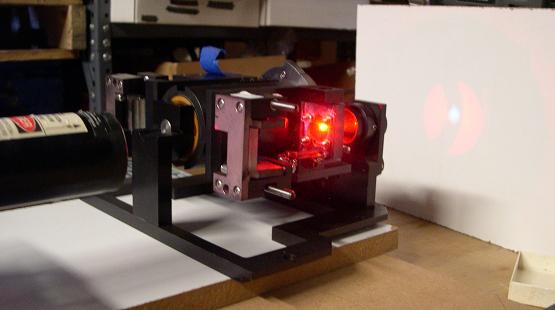
Raman notch filter
The notch filter is blocking 633nm light in its dark annular shadow.
But the raw laser light also contains some undesirable wavelengths (plasma discharge (tubes), superradiance (diodes),...)
which show up as a bluish spot within the dark ring.
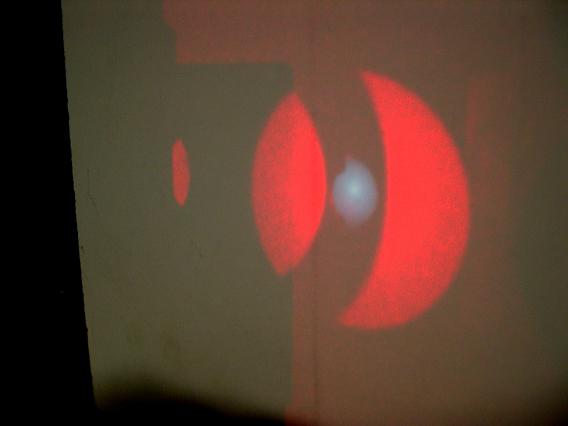
Raman Notch filter with Laser Line filter
A "laser line" filter cleans up the raw laser light by removing that bluish light.
Ideally now, the only light that will show up in the annular shadow is Raman-scattered light.
But in practice fluorescent light from the specimen is another possible source of light.
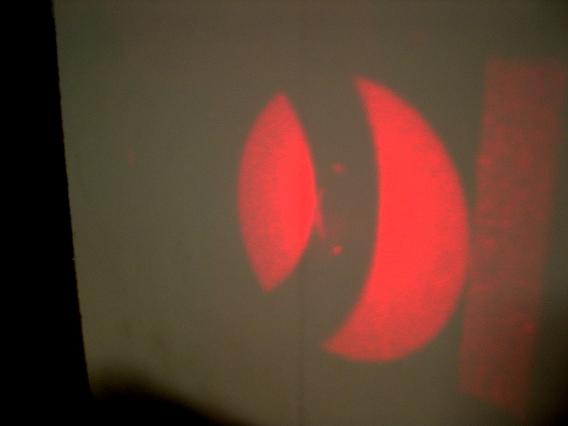
Extracting the Raman Scattered Light
The area outlined below should be the only part that is reflected by the
subsequent mirror towards the spectrograph's entrance slit.
A lens after the Raman filter magnifies this area onto a right-angle mirror.
Then a rectangular shaped hole in the confocal pinhole sled will also
crop out excess light (when the pinhole is not inserted).

Injection/Rejection Filter Alignment
At the moment, this is my best description of how the injection/rejection Horiba Raman Notch
Filter should be aligned:
